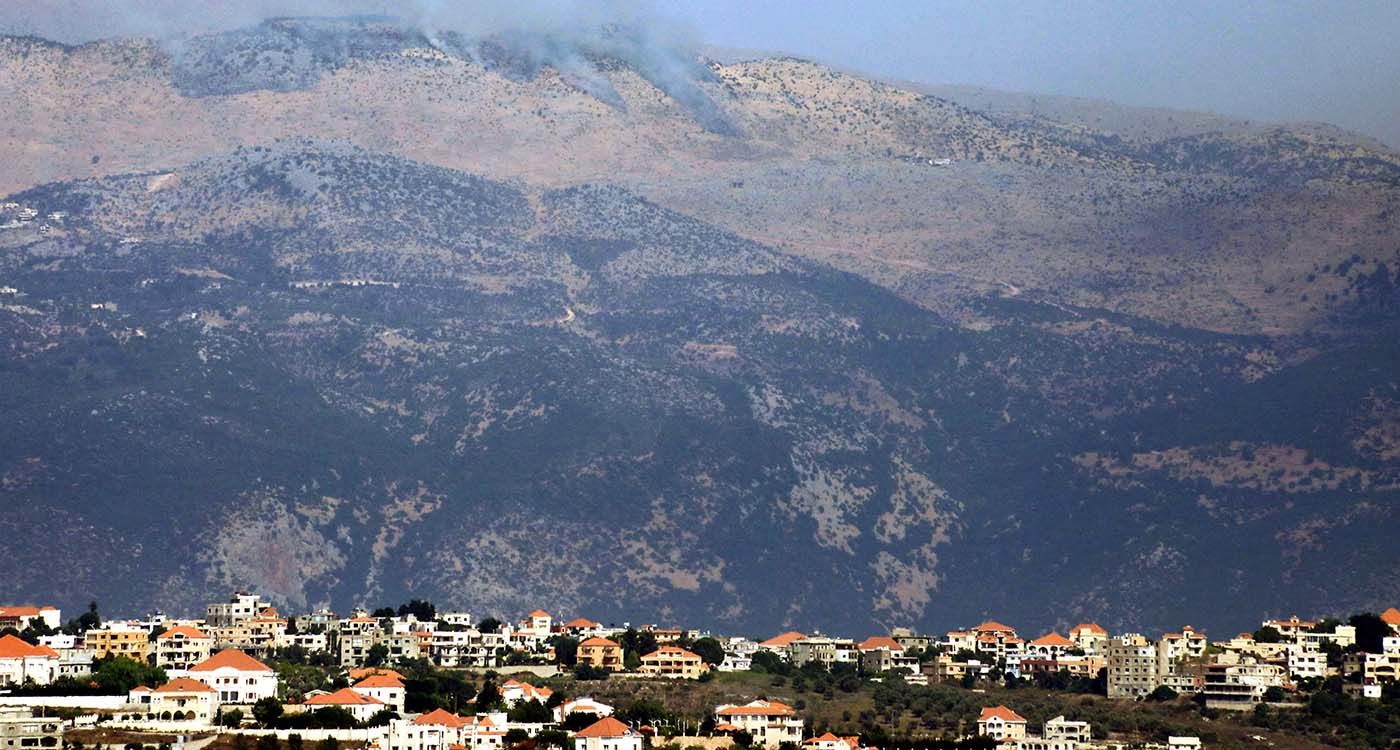
Since the fall of Bashar al-Assad and the rise of Ahmad al-Sharaa as Syria’s president, the political landscape has dramatically shifted. Long-held narratives have unraveled, and entrenched positions reversed, including those concerning territory, borders, and the disputed Shebaa Farms.
No longer using Shebaa as a pretext for resistance under the banner of “liberation,” Sharaa’s Syria now claims the area as Syrian sovereign territory. This stance persists despite official documents affirming the farms' Lebanese identity.
In this new context, US envoy Thomas Barrack’s remarks stunned Lebanese officials. “I visited the Shebaa Farms,” he said. “Honestly, I thought they were thoroughbred horse farms, like Kentucky. The most beautiful land I’ve seen. I asked myself: what are you even fighting over?” He added, “It’s a border issue, right? Then just swap surrounding land. It’s not like the territory holds any real value.”
Officials were caught off guard by Barrack’s surprising stance, with many seriously considering his proposal of a land swap to resolve the Shebaa dispute.
Israel’s occupation of the Shebaa Farms remains a long-standing issue, and Lebanon’s claim to the territory is firmly established. Since Israel’s withdrawal from Lebanon in 2000, the farms have remained a point of contention. Lebanon asserts sovereignty over the area, alongside the nearby Kfarchouba Hills.
Israel has occupied the Shebaa Farms since 1967. Locals recount how those who refused to sign land sale documents or abandon their homes were forcibly evicted by Israeli forces and denied the right to return. Furthermore, Israel prohibited residents from cultivating or investing in their lands, effectively forcing them to abandon their property.
These events are documented in United Nations records, including court rulings and police reports from the Shebaa checkpoint, which confirm Lebanese ownership of the farms.
Internationally, the Shebaa Farms are recognized as Lebanese territory by both the United Nations and Syria. This recognition was reaffirmed following Israel’s withdrawal from Lebanon in 2000 — a development shaped by political considerations that bolstered the position of the 'resistance' and served to justify its continued armed presence under the pretext of reclaiming occupied land.
On May 16, 2000, just nine days before Israel’s withdrawal, then-Syrian Foreign Minister Farouq al-Sharaa personally confirmed to UN Secretary-General Kofi Annan that the Shebaa Farms belonged to Lebanon.
Despite this, successive Lebanese governments largely ignored this acknowledgment, and the area has never been officially designated as Lebanese territory within the United Nations Interim Force in Lebanon (UNIFIL) operational zone, even after more than two decades.
In 2006, Annan proposed a mechanism to formally establish the farms’ Lebanese status, requesting that both Lebanon and Syria provide any evidence of territorial transfer. Syria has never submitted such documentation, and Lebanon did not formally demand it.
In 2007, Lebanon’s UN mission in New York informed the Foreign Ministry that, in his periodic report on the implementation of UN Security Council Resolution 1701, the Secretary-General called for Israel’s immediate withdrawal from the Lebanese Shebaa Farms.
Finally, in August 2008, the joint communiqué issued at the Lebanese-Syrian summit in Damascus, attended by Presidents Michel Sleiman and Bashar al-Assad, reaffirmed “the necessity of Israel’s withdrawal from the Lebanese Shebaa Farms.”
These facts reinforce Lebanon’s claim to the Shebaa Farms. A former official revealed that despite Syria’s official recognition of the farms as Lebanese, it opposed starting border demarcation from the south due to Israel’s occupation. Syria insisted the process begin from the north but never initiated it - widely seen as a deliberate move to avoid border controls that might hinder Hezbollah’s activities and Iran’s access to southern Lebanon.
With the fall of the al-Assad regime and the rise of al-Sharaa to power, Sharaa expressed a strong desire to demarcate the border with Lebanon to regulate crossings, curb smuggling, and cut off the strategic link between Iran and Hezbollah - signaling Syria’s shift away from the obstructionist axis.
Saudi Arabia facilitated Lebanese-Syrian talks in Riyadh, bringing together the defense ministers of both countries to agree on border demarcation. France supported the effort by providing Lebanon with mandate-era maps of Lebanon and Syria to help resolve border disputes. The United States praised Sharaa’s initiative and urged accelerating the demarcation to tighten border controls and prevent smuggling.
During this period, Sharaa avoided addressing the status of the Shebaa Farms, primarily because he was engaged in negotiations over Syria’s potential entry into the Abraham Accords and the normalization process. He thus postponed border demarcation with Lebanon until after reaching an agreement with Israel, to avoid losing the farms.
In a surprising move, Barrack urged Lebanon to abandon the Shebaa Farms and accept a land swap. This reflected an unusually accommodating stance by the Trump administration toward Sharaa, who had effectively distanced Syria from the Iranian axis.
Sharaa’s firm claim to the Shebaa Farms as Syrian territory aims to undermine the resistance’s justification for armed struggle, contrasting with the previous Assad regime’s position, which bolstered the resistance by affirming the farms as Lebanese.
Why the dispute over Shebaa? Because it is a strategically important area, rich in springs, and a vital water source for Israel - one it is unwilling to relinquish. Consequently, several solutions have been proposed, notably the continued presence of international forces in Shebaa and the Golan Heights.
How will Lebanon act to reclaim the farms? Will it secure Syria’s recognition of Shebaa as Lebanese territory, or will it accept Barrack’s proposal to trade Shebaa for peace?




Comments